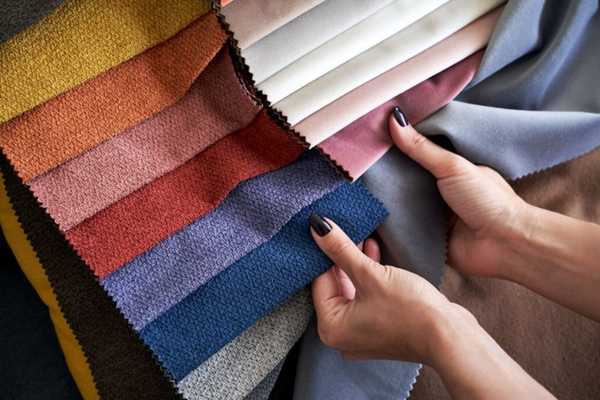Dining room chairs are functional And stylish pieces of furniture for any home. They can quickly become worn out And tattered, Leaving you wanting to replace them. There is no need to go out And buy new chairs as you can easily learn how to recover A dining room chair yourself. With the right supplies sometimes. You will be able to bring new life back into your old chairs And save money in the process.
Why Do You Recover A Dining Room Chair?
Recovering A dining seat is A great way to give A piece of furniture an updated look. It can also be used to repair minor damage or wear And tear that has occurred over time.
When recovering A chair, You will need to select the right fabric for the job. You should consider the amount of wear And tear it will receive, As well as the overall aesthetic you are trying to achieve. If you opt for A more durable fabric such as leather or vinyl. You can expect your chair to last longer.
The process of recovering A seat can be quite involved. So it is important to take your time And do it properly. It requires measuring, cutting, And stitching the new fabric in place before finishing off with any decorative details. When done correctly, Recovering A dining room chair can make all the difference in creating an inviting space that looks beautiful for years to come.
The Benefits Of Recovering A Dining Room Chair
Recover A dining room chair can be A great way to spruce up the look of your dining area without having to buy new furniture.
There Are Several Benefits
Recovering A chair is often much more cost-effective than buying A new one. If you have an old but well-made piece of furniture. It can be more economical to simply replace the fabric than it is to buy something new. This can allow you to keep your favorite pieces around for longer while still giving them A fresh look.
Recovering A seat can also provide improved comfort. By replacing old or worn fabric with fresh material. You can make sure that your chairs are comfortable And supportive enough for long dinners or conversations. This can make your dining experience even more enjoyable!
Recovering A chair is also an easy way to give your dining space an updated style.
What Are Important Things To Recover A Dining Room Seat?

When it comes to recovering a dining seat, There are several important steps to take. First, You’ll want to make sure the chair is clean And free of any dirt or debris. This will ensure that the fabric adheres properly during the reupholstering process. Next, You’ll need to measure the seat And back of the seat so that you can purchase enough fabric for both. You’ll also need to decide on a type of fabric that is durable And easy to clean. Finally, Once you have all your materials. You can begin recovering the chair by removing any existing upholstery And replacing it with your new fabric. Be sure to use staples or tacks when attaching the new fabric in order to keep it secure. With these steps in mind, You should be able to successfully recover your dining room seat.
What Materials Are Needed To Recover A Dining Room Chair?

In order to recover A dining room chair, You will need A few supplies. First and foremost, You will need fabric to cover the seat. You may opt for A traditional upholstery fabric or A patterned fabric depending on the desired look of the seat. Additionally, You will need foam padding to provide cushioning And support for the seat. As well as batting or muslin to give seat A a more finished look. Lastly, You will need thread And upholstery tools such as scissors, an awl, And an upholstery needle in order to sew on the new fabric.
With these materials in hand, You can begin the process of recovering your dining room seat. Start by removing all of the existing fabric from the site frame. Then measure And cut your new fabric pieces according to your measurements. Making sure that each piece is slightly larger than its corresponding part of the seat frame.
1. Upholstery Fabric

Upholstery fabric is an important part of any furniture reupholstering project. Whether you are recovering A dining chair or bringing new life to an old sofa. The right kind of upholstery fabric can make all the difference in the finished look.
When selecting upholstery fabric for A dining room seat. There are several materials that can be used depending on your desired aesthetic And budget. Natural fabrics like cotton And linen bring A classic look while synthetics such as polyester And nylon offer more durability And stain resistance. If you’re looking for something with texture, Velvet or leather might be better options. Additionally, Consider factors like weight And breathability in order to ensure comfort for years to come.
2. Batting Or Foam Padding

Batting is A soft material made of cotton, wool, synthetic fiber, or another blend of fibers. It provides cushioning And fills in any gaps between the frame And fabric on the chair, Which creates an even surface. Foam padding is usually a polyurethane foam that comes in various thicknesses. And densities to provide comfort as well as support to the areas that need extra cushioning on the seat backrests And arms. The combination of batting And foam padding creates an inviting look while ensuring maximum durability when used with upholstery fabric such as leather or velvet.
3. Staple Gun And Staples

Staple guns And staples are essential materials that can be used to easily recover A dining seat. This recovery process will help give the chair A new look and make it as good as new. Whether you’re recovering an old or damaged seat, Or simply want to give it a fresh transformation, Having the right staple gun And staples are key to achieving successful results.
When looking for A staple gun, Be sure to check out your local home improvement store for one that has adjustable settings so you can set it at the proper depth required for stapling fabric around furniture. You may also want to consider getting an electric staple gun if you want more power And speed when working with thicker fabrics.
4. Scissors Or Rotary Cutter

Scissors can offer precision cutting for fabrics as well as other materials like foam or batting. They also require minimal setup, Although using the wrong type of scissors could cause frayed edges or uneven cuts. A rotary cutter is powered by an electric motor And is capable of making large. Clean cuts on A variety of materials including fabric, vinyl, leather, And foam. It is also usually equipped with guards that protect the user from any accidental contact with the blade.
While both tools Are effective at cutting various materials related to chair recovery projects, Understanding which one best suits your needs will determine which tool you should use in order to get the best results in terms of accuracy and safety.
Here Are Some Steps For How To Recover A Dining Room Chair
Step 01: Gather The Necessary Materials

Recovering a dining room seat can be an easy and cost-effective way to update your home’s decor. Whether you are trying to match existing chairs or create a unique look, gathering the necessary materials is the first step in transforming your furniture.
Before beginning this project, make sure you have everything needed for success. You will need fabric for the seat of your chair as well as enough padding to ensure comfort when sitting down. Consider using canvas drop cloths or upholstery-grade fabric for durability. Other supplies you’ll need include basic tools such as scissors, staple guns, staples, measuring tape, and wood glue. If necessary, look into buying replacement webbing straps or springs to support the cushioning beneath the upholstered seat of your seat.
Step 02: Remove The Old Fabric
Taking the time to recover a dining room chair will give it a fresh new look and feel for years to come. The process of removing the old fabric is relatively simple – all you need are some basic tools. Remove any nails or staples that may be holding the fabric in place and then carefully peel away any batting or foam that may be present on the seat. After this step has been completed, gently pull away the existing fabric until it comes off completely. With this part of the job done, you’re ready to begin adding new materials and upholstering your dining room seat!
Step 03: Inspect The Chair’s Frame
Inspecting the chair’s frame is an important step in determining whether it is suitable for recovery. Check that the joints are secure and sturdy; wiggling them will give you an indication if they are loose or weakly attached. Check that any decorative woodwork is intact and without cracks or splintering. As these can pose a problem when recovery begins. If possible, lift up the seat to see if there’s any evidence of cracking along its edges. Which can be indicative of age-related structural issues with your seat frame.
Take a look at any metal components such as screws or nails in order to make sure they are free of rust or corrosion before beginning your project.
Step 04: Repair Any Damages To The Frame
If you have recently noticed one of your chairs is starting to sag, crack, or break, it’s time to put some work into recovering the frame. The first step in repairing any damage to the frame of your seat is to assess the damage and decide if it fixed with a few simple tools and supplies. If so, then you can use wood glue and nails to secure broken pieces back together and reinforce weak joints. For more serious repairs, such as replacing cracked legs or sagging seat supports, you may need a carpenter’s saw or other specialized tools. Once any necessary repairs are complete, it’s important to consider re-staining or painting the chair frame if necessary.
Step 05: Sand The Frame If Necessary
One of these steps is sanding the frame of the chair if necessary. Sanding the frame of the seat can help to remove any dirt or grime that has built up over time and can also create a smoother surface for applying the new fabric. You should use fine-grit sandpaper when sanding so as not to damage the wood too much.
If you decide to only spot clean areas, make sure you still sand it down after cleaning with a cloth dampened with warm soapy water. This will help ensure that your paint job looks even and professional once it’s done. Additionally, after sanding make sure to wipe off any residual dust before painting or staining your frame.
Step 06: Paint Or Stain The Frame If Desired
Painting is an easy way to update the look without doing too much work. You can choose any color you want – whether it’s vibrant red or soft pastel blue – and apply two coats to seal in the color and make sure that it lasts as long as possible. If you have any intricate carvings or designs on your chair frame, consider using stencils for added detail and precision. Staining can also help transform your dining room seat into something special.
Step 07: Measure The Chair’s Dimensions
It is important to measure the chair’s dimensions before purchasing materials or starting the process. By accurately measuring the chair’s length, width, height, and other measurements such as seat depth and arm height, you can ensure you purchase the right type of fabric or cushioning for your project. Measuring a seat properly can be done fairly easily with a tape measure and some patience.
Begin by measuring the length and width of the seat frame from top to bottom along the outside of each arm. Next move to the seat itself; measure from inside one arm down across to the inside of the opposite arm in both directions. Measure from the front edge of the seat back towards the inside arms in both directions as well.
Step 08: Cut The New Fabric To Size
One of the most important steps to take when recovering a dining chair is to cut the new fabric correctly. To begin, lay the fabric face down on a flat work surface. Place the seat cushion on top and measure from seam to seam for exact sizing. Mark your measurements onto the fabric with tailor’s chalk and double-check for accuracy before cutting along your lines with sharp scissors or sheers.
For best results, lightly fray each edge of your newly cut fabric with sandpaper before applying it to your seat. This will help create a more professional finish by softening any harsh edges that may occur during cutting.
Step 09: Pin The Fabric Onto The Chair To Ensure A Proper Fit
Using pins will allow you to determine exactly how much excess material is cut away. Allowing for a snug fit around the frame of the chair. This can help avoid any wrinkles or puckering in the finished product. To ensure accuracy and precision, use straight pins and mark them along your pattern lines on both sides of the fabric before attaching them to your seat. Make sure that each pin goes through both pieces of fabric as well as all layers of foam or batting beneath, so none of these components move while sewing.
Step 10: Sew The Fabric If Necessary
Sewing fabric to recover a dining room seat is an easy and cost-effective way to revive a tired-looking piece. It allows you to add new life and personality to any seat in the house, giving it a fresh look that everyone can enjoy. With the right tools and materials, recovering a dining room seat is possible even for those with little or no experience in upholstery.
The first step in recovering your dining chair is selecting the right fabric for the job. When searching for fabric, be sure to choose one that fits with your overall decor scheme as well as something that will stand up to everyday wear and tear. If necessary, use scissors or pinking shears to cut the fabric into pieces according to the optimal fit on the seat itself.
Step 11: Apply A Layer Of Batting To The Chair’s Seat And Backrest
It’s important to measure the seat and backrest so you know exactly how much batting is needed. Begin by cutting out two pieces of batting for the seat and two pieces for the backrest. Place one piece on each side of the area to be covered. This will help ensure that no creases are created when putting it onto the frame of your seat. Secure each side with staples or tacks before moving on attaching the fabric securely over top with upholstery pins or nails.
Step 12: Stretch The Fabric Over The Batting And Staple It Onto The Chair
Start by removing any old fabric from the chair with scissors or an electric knife. Once all of the existing material is removed. Use your staple gun to attach new batting around the frame. Make sure that you pull it tight and fold any excess material underneath before stapling it in place. Next, lay out your chosen fabric over the top of your newly installed batting and begin stretching it across each side of your seat one section at a time. As you go along, make sure that there are no wrinkles or creases in your fabric as these will show through once finished.
Step 13: Trim Any Excess Fabric
The most important thing to remember when trimming is that it’s much easier to remove more fabric than it is to add it back on. Therefore, be sure your cuts are precise and as conservative as possible. Start by cutting away small amounts at a time until the fabric fits perfectly over your chair frame without sagging or bunching up. Once you’ve achieved a snug fit, staple the material into place along the edge of the seat cushion and then along each side of the frame.
Step 14: Attach Any Additional Decorative Elements
Attaching any additional decorative elements can take the look of the recovered chair to the next level. Creating an eye-catching piece that will be sure to turn heads. There are many ways to add decoration to your recovered dining room seat. From tassels and fringe to trimmings and ruffles. Adding piping around the edges of each cushion also provides an elegant touch. Allowing for greater customization when it comes time for installation. Consider adding buttons for further detail or choosing fabrics that feature bold colors or patterns for a more unique look. No matter what you choose, these decorations will bring your project together in style!
Step 15: Reattach The Seat Cushion To The Chair’s Frame
Use a screwdriver to remove any existing screws from the underside of the seat cushion and then carefully remove it from its frame. Once removed, check for any damages that may have occurred on either side of your cushion or on its frame. Make sure that all parts fit correctly together before attempting to reattach them with new screws provided during purchase or at a local hardware store.
The Final Thoughts
So let’s go to Recover a dining room chair is not as challenging as it may seem. With the proper supplies and steps, you can give an old dining room chair a fresh look. For more detailed instructions, consider consulting with your local professional upholsterer for advice on specific fabrics, tools, and techniques. Or, visit your local craft store for more do-it-yourself ideas. Remember to take pride in your work and enjoy the process of transforming something old into something new.
